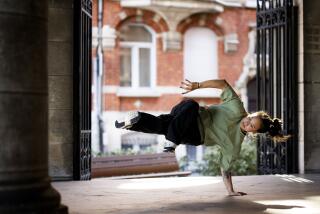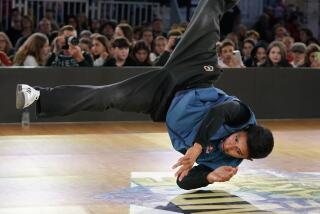Sport Leaves Skiers in Its Wake
If Hollywood ever decides to make another “Jaws” movie, it should think twice about using a water skier as shark bait.
That would be dated.
That’s because the most popular water sport today is wakeboarding, a confluence of surfing, water skiing, snowboarding and skateboarding.
It’s the fastest growing water sport worldwide and will be one of the featured events at the X Games, beginning today at 10:30 a.m. at the Long Beach Marine Stadium.
Darla Friday, whose 17-year-old daughter, Dallas, has won gold medals at two of the last three X Games, taught her three children to ski on water by the time they were 4 years old. Now, she rarely sees any water skiers near their home on Lake Holden, a 252-acre lake about two miles south of Orlando.
“It’s so funny to see a water skier,” she said. “It’s just so odd.”
The Sporting Goods Manufacturers Assn. reported earlier this month that approximately 3,356,000 people participated in wakeboarding last year. Wakeboards now outsell water skis by about 20 to 1.
Like water skiing, the sport, which made its X Games debut in 1996, usually requires a boat, although some wakeless cable-operated water parks are located around the country.
The sport differs from water skiing in that there is more room for innovation and creativity. Whereas the first wakeboarders -- known as skurfers -- skimmed along the top of a boat’s wake, today’s enthusiast uses the wake as a launching ramp to perform rotations, flips and other tricks.
Because of its similarity to surfing, skateboarding and snowboarding, it has enjoyed a strong crossover from these sports.
“When you learn how to get air,” Dallas Friday said, “that’s when it gets really fun.”
In recent years, obstacles have been added to competition courses, such as kickers and sliders, which the wakeboarders also use to perform above-the-surface tricks.
As much as the freedom to perform aerial tricks was a big attraction to many top professionals, they also enjoy wakeboarding for the camaraderie.
“Once you try wakeboarding, you love it,” Dallas Friday said. “You’re out on the boat with all your friends. It’s a great experience.”
Because the sport usually requires a boat, preferably one specially designed for wakeboarding, it tends to attract participants from upper-middle class families. According to the SGMA, the average annual household income for those who participate was reported at $73,400 and the average age is 22.
Because most 22-year-olds don’t make that much money, mom and dad typically get involved as well.
“It’s a family sport,” said Parks Bonifay, 22, of Winter Park, Fla., a two-time X Games gold medalist in the event. “Unlike skateboarding, where you can just hit the concrete and go, you need a boat. It forces parents to buy boats and turns the sport into a group thing.”


